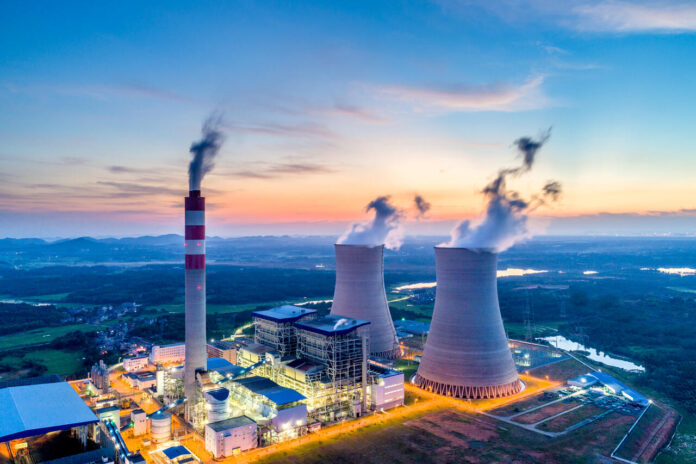A recent study conducted by the strategic consulting and market research firm, BlueWeave Consulting, revealed that the Global Carbon Capture Utilization and Storage Market was worth USD 2.35 billion in the year 2021. The Carbon Capture Utilization and Storage market is projected to grow at a CAGR of 31.1%, earning revenues of around USD 15.24 billion by the end of 2028. Rapidly increasing industrialization worldwide has increased carbon dioxide emissions. To lessen their carbon footprints, legislators in several developed and developing nations, including the United States, the Netherlands, the United Kingdom, China, and India, are building numerous CO2 capture and storage facilities. This element is anticipated to propel the growth of the carbon capture, utilization, and storage market from 2021 to 2031. However, the high cost of the capture of carbon dioxide and carbon dioxide leakage from underground storage reservoirs, in turn, may act as a huge restraining factor for the market growth.
Reduced CO2 Emissions from the Power Sector to Drive Market Growth
Coal and gas-fired power plants dominate the global electricity generation sector. Despite the introduction of renewable energy sources for power generation, fossil fuel power continues to dominate the energy sector. Coal is the most common energy source, followed by gas. As a result, power is the largest carbon-emitting sector, accounting for more than 40% of total emissions. As a result, carbon capture, utilization, and storage technology are critical for reducing emissions from such power plants. Retrofitting the power sector with CCUS technologies, for example, can help reduce carbon emissions from existing plants. This results in offering lucrative opportunities for the Global Carbon Capture Utilization and Storage Market during the forecast period (2022-2028).
Increased CCUS Projects in the Asia-Pacific Region to Create Excellent Growth Opportunities
The transition to clean energy in the Asia-Pacific region is expected to heavily rely on carbon capture, utilization, and storage technologies. The CCUS technology’s contribution to reducing carbon emissions from existing power plants and industrial assets is largely responsible for this. This will also encourage the creation of new commercial opportunities for the production of ammonia and hydrogen with low carbon emissions. For instance, Japan is the driving force behind carbon capture, utilization, and storage projects in the Asia-Pacific region. This is largely due to increasing funding and investment in projects to achieve carbon neutrality by 2050.
Sample Report @ https://www.blueweaveconsulting.com/report/carbon-capture-utilization-and-storage-market/report-sample
High Implementation and Capital Investment Costs to Limit Market Growth
One of the main obstacles to the global adoption of CCUS technology is its high implementation costs. For instance, the cost of carbon capture and compression is high because it reduces power plant efficiency and raises water usage. For the power plants, which are already dealing with water scarcity, this poses a serious problem. Additionally, it is predicted that the market growth during the forecast period will be constrained by the research and development costs related to the full-scale deployment of carbon capture, utilization, and storage.
Segmental Coverage
Global Carbon Capture Utilization and StorageMarket – By Technology
Based on technology, the Global Carbon Capture Utilization and Storage Market is segmented into Pre-combustion Capture, Oxy-fuel Combustion Capture, and Post-combustion Capture. The post-combustion capture sub-segment dominates the market share. In the post-combustion process, CO2 is extracted from the flue gas produced by the combustion of fuels like coal or natural gas. Additionally, it is predicted that the oxy-fuel combustion capture sub-segment will grow the fastest during the forecast period (2022-2028). The process of burning the fuel with almost pure oxygen rather than air is known as oxy-fuel combustion capture. This technique is becoming more and more popular because it generates exhaust gas that is primarily made up of water vapor and CO2, which can be readily separated to produce high-purity CO2.
Impact of COVID-19 on Global Carbon Capture Utilization and StorageMarket
The carbon capture, utilization, and storage market are expected to experience a decline in 2020 as a result of the COVID-19 pandemic. This deadly virus has harmed everyone in the world, but especially in North America and Europe. To prevent the virus from spreading further, businesses have stopped operating, factories have been closed, and the government has limited construction work. All end-use industries have consequently used carbon capture, utilization, and storage less frequently. COVID-19 and pre-existing regulatory issues, such as drawn-out permitting procedures, have slowed down end-use industry production, which has reduced demand for carbon capture, utilization, and storage. The demand for carbon capture, utilization, and storage is expected to rise in 2021, though.
Competitive Landscape
The leading market players in the Global Carbon Capture Utilization and Storage Market are Fluor Corporation, ExxonMobil Corporation, Linde plc, Royal Dutch Shell Plc, Mitsubishi Heavy Industries, Ltd, JGC Holdings Corporation, Schlumberger Limited, Aker Solutions, Honeywell International Inc., Equinor ASA, TotalEnergies SE, Hitachi, Ltd, Siemens AG, General Electric, Halliburton, and other prominent players. The Global Carbon Capture Utilization and Storage Market are highly fragmented with the presence of several manufacturing companies in the country. The market leaders retain their supremacy by spending on research and development, incorporating cutting-edge technology into their goods, and releasing upgraded items for customers. Various tactics, including strategic alliances, agreements, mergers, and partnerships, are used.
Contact Us:
BlueWeave Research Blog
Phone No: +1 866 658 6826
Email: info@blueweaveconsulting.com













